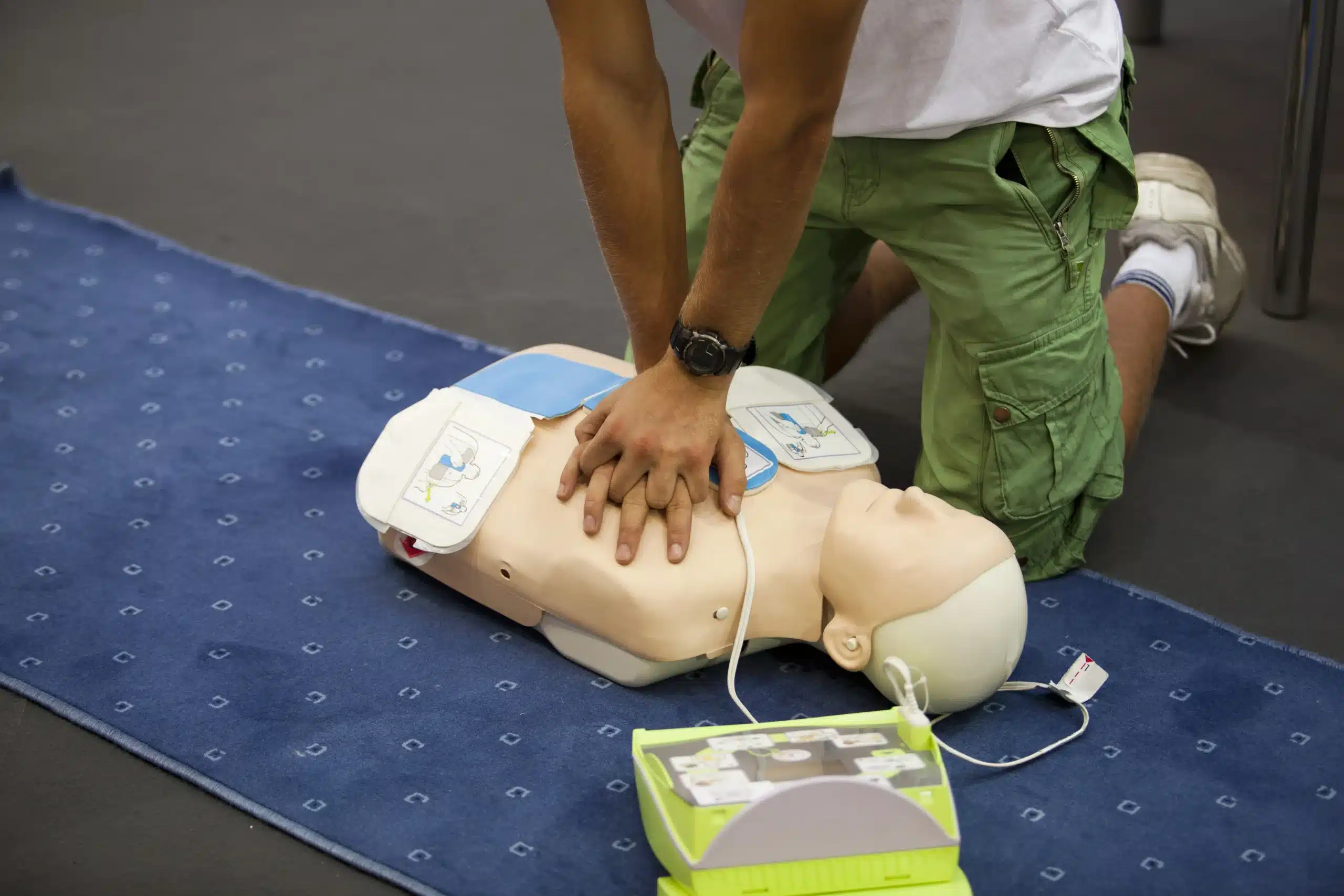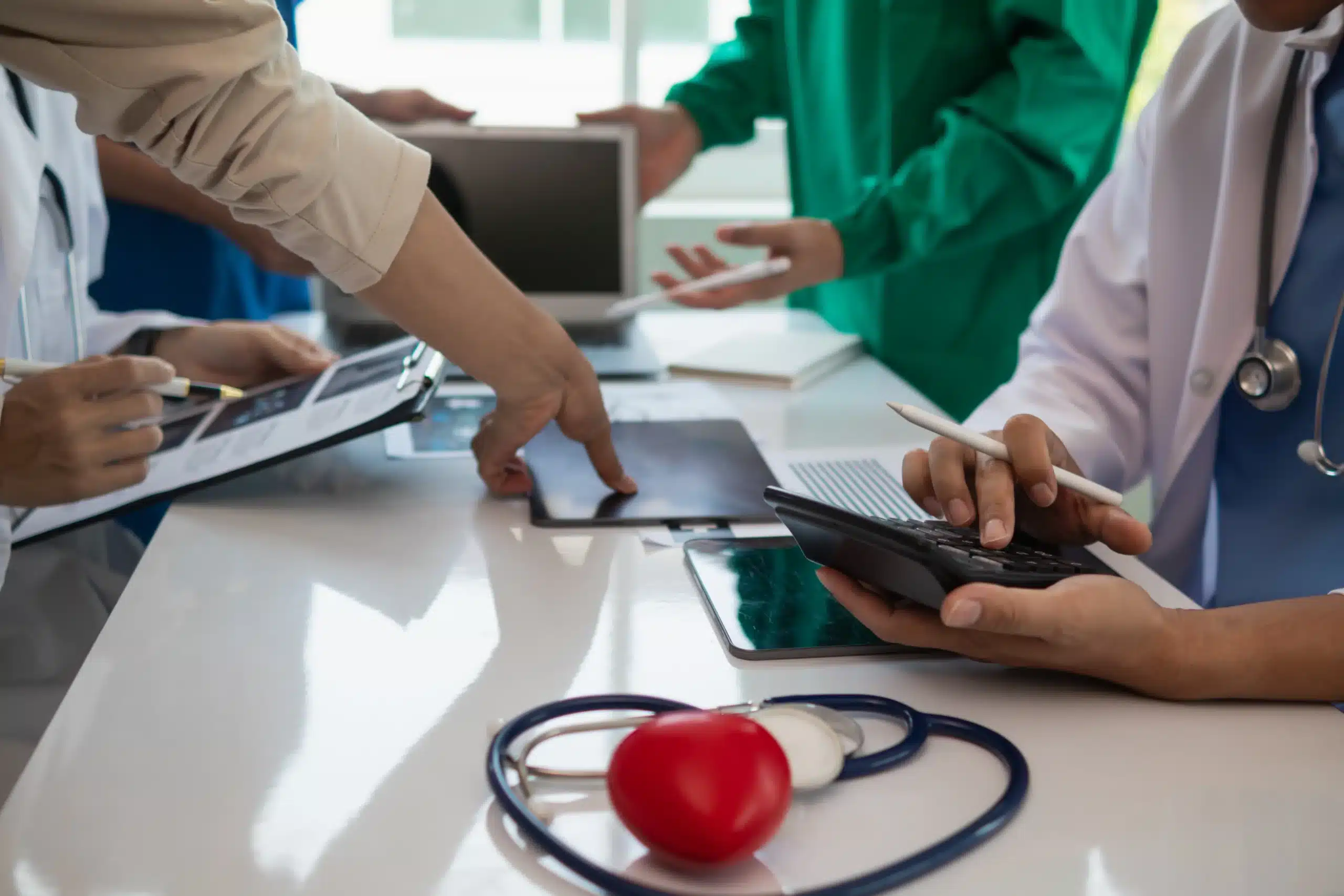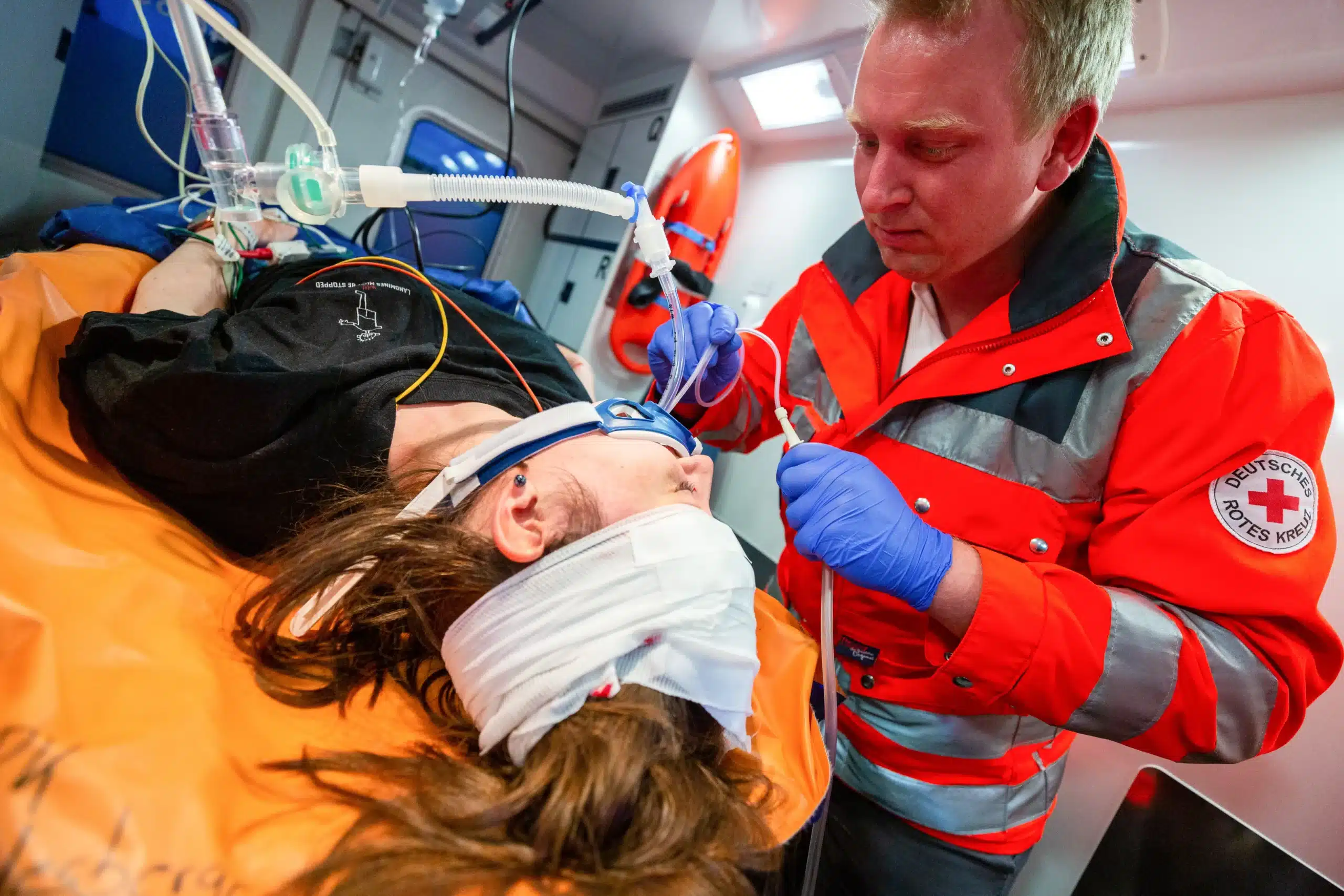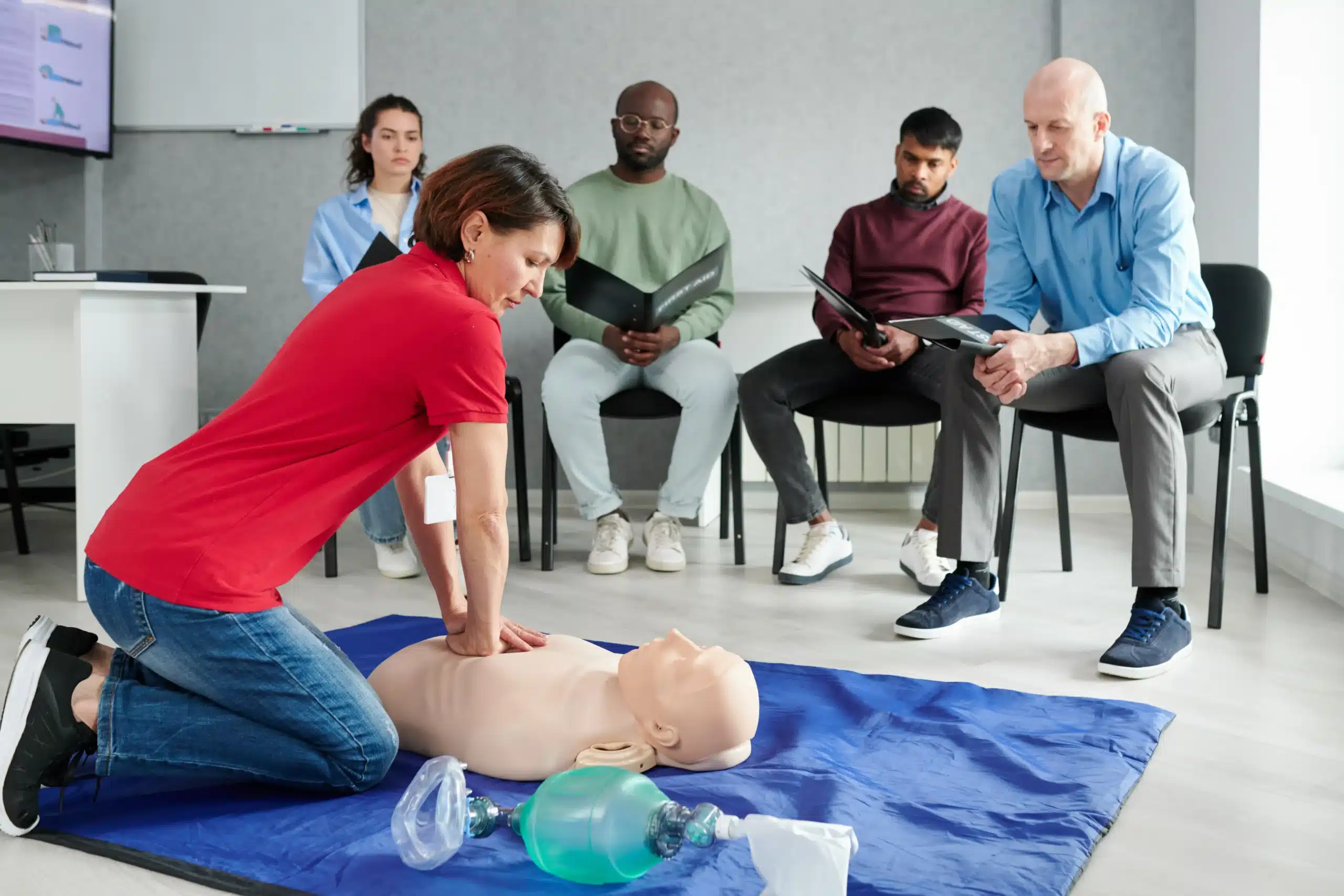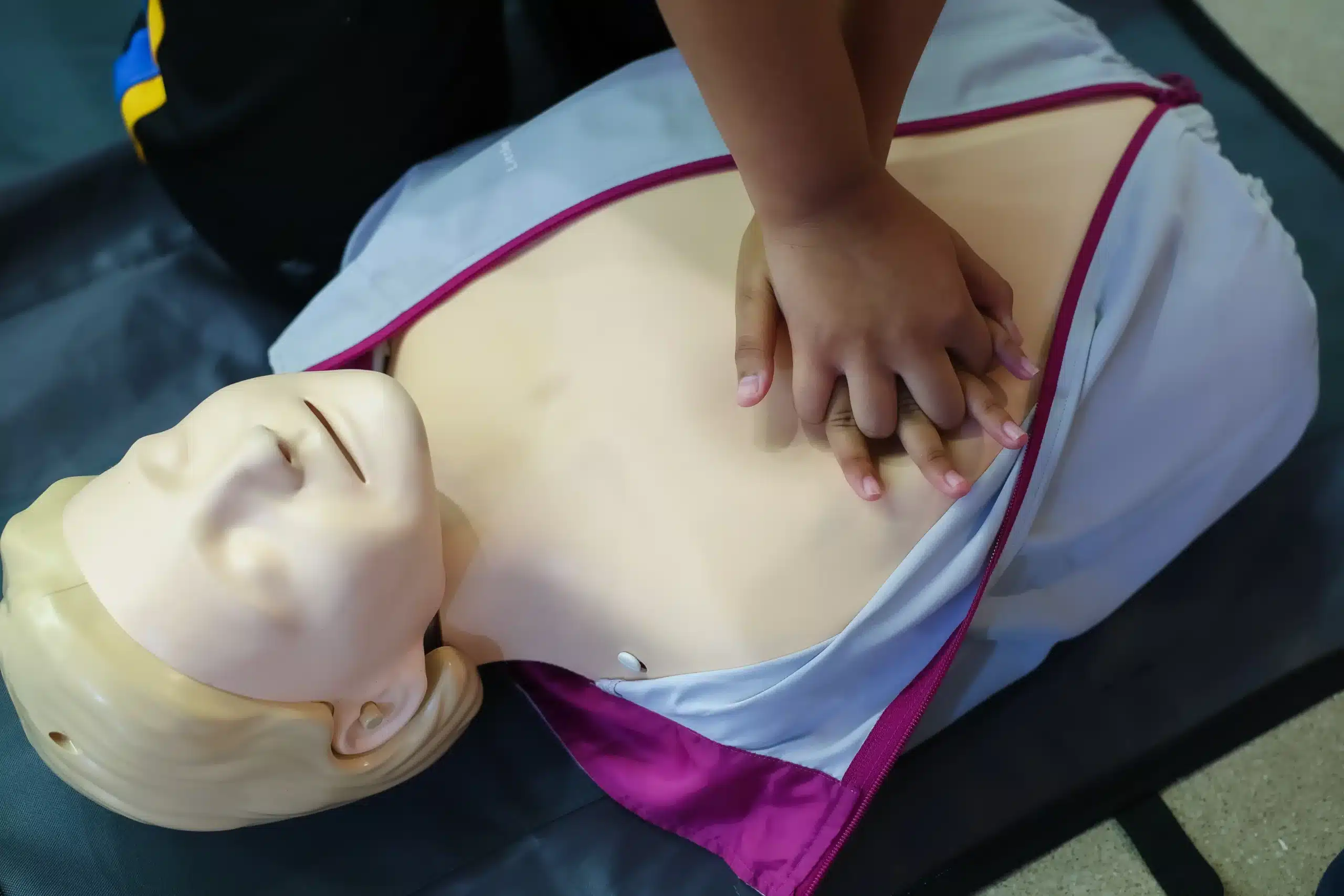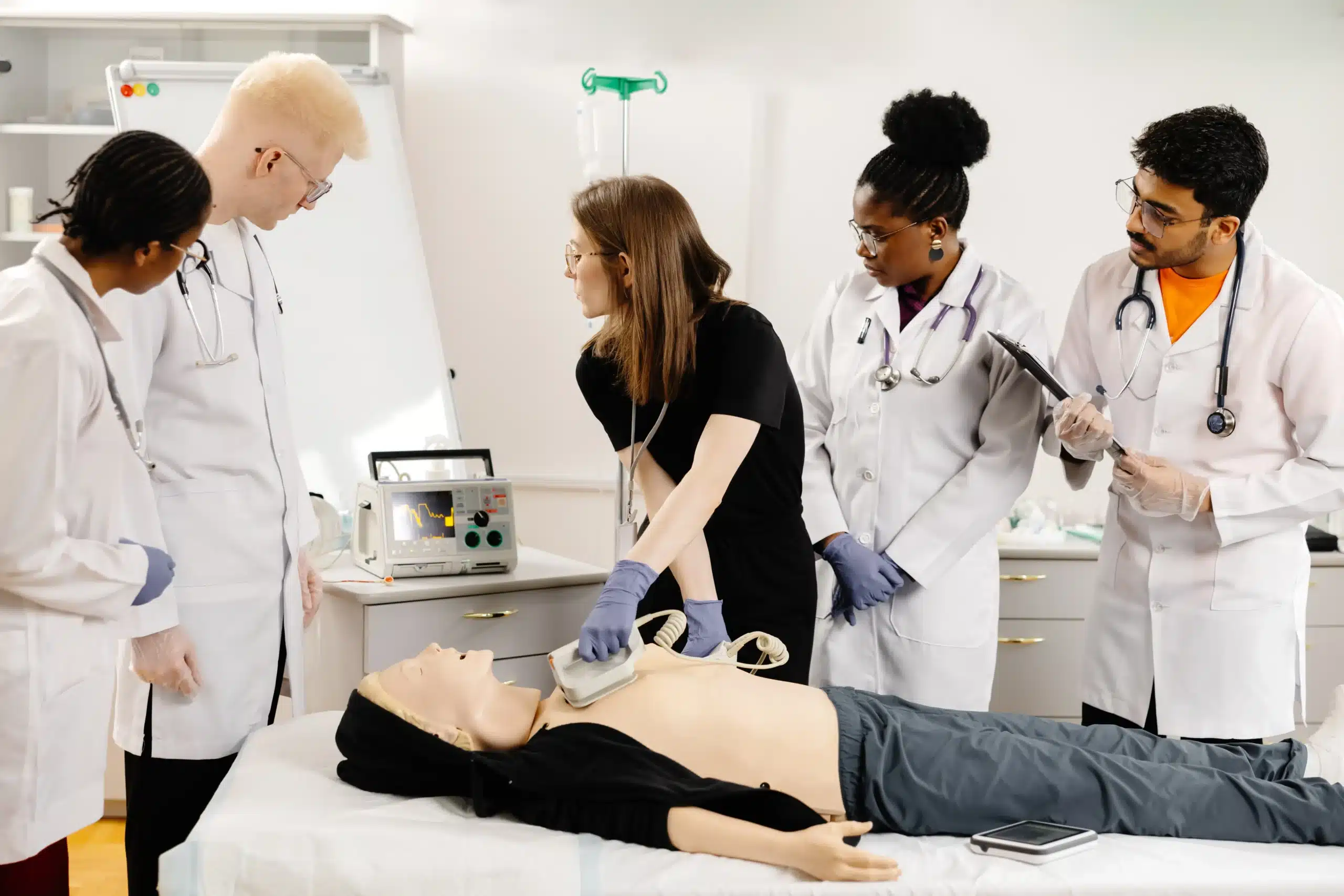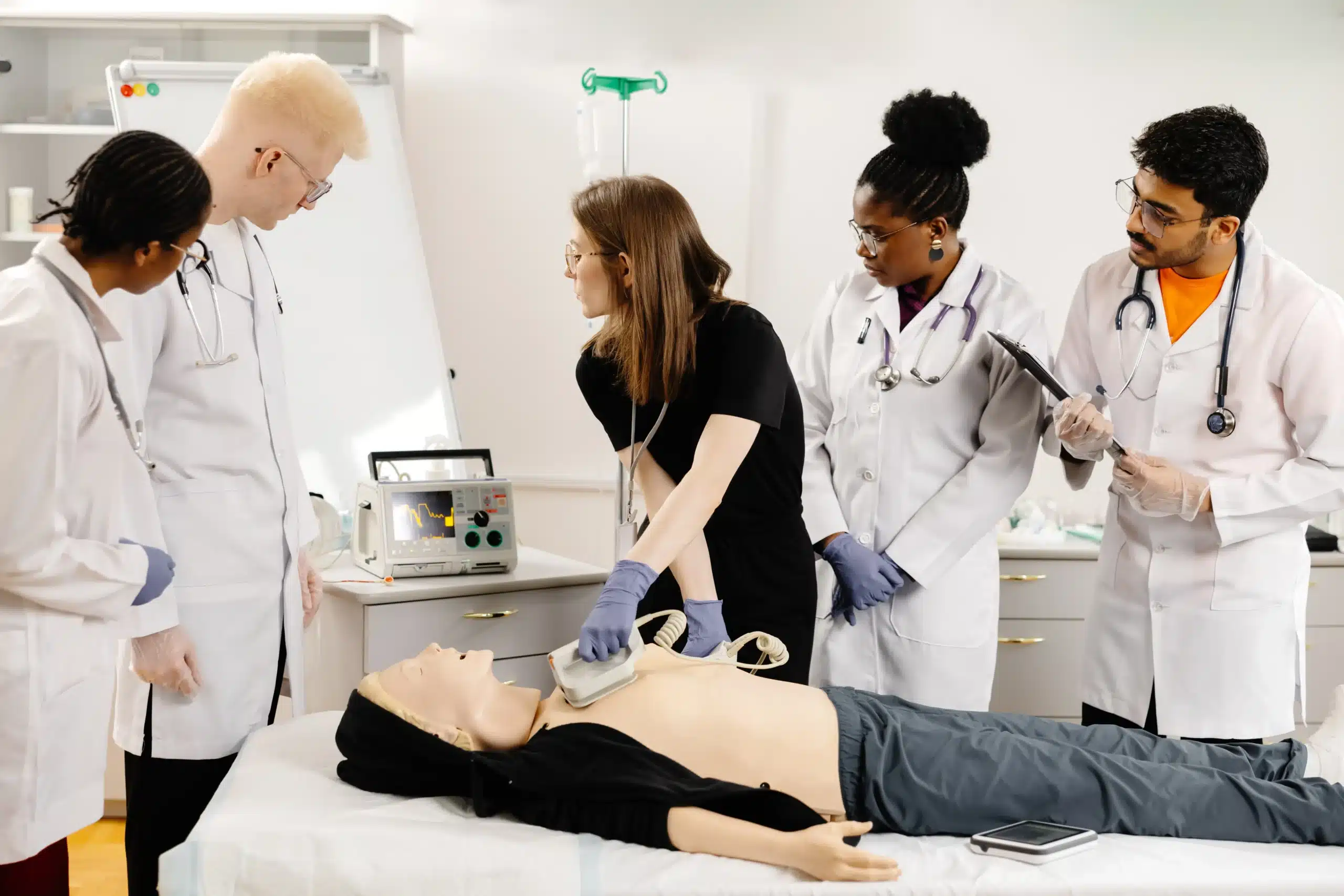Life is full of unexpected twists and turns, and sometimes, those twists and turns involve medical emergencies. Knowing how to administer first aid can be a game-changer, turning a potentially scary situation into a manageable one. This guide will walk you through the essentials of first-aid training, including how to find first-aid classes near me. We’ll explore different course options, discuss the importance of certification, and provide practical tips for choosing the right class. Whether you’re looking to advance your career, protect your family, or simply become a more prepared individual, this guide is your starting point.
Key Takeaways
- First-aid skills empower you in emergencies: Knowing how to respond to injuries and medical crises gives you confidence and potentially life-saving abilities. Find the right training level, from basic wound care to CPR and specialized certifications.
- Select a course that meets your needs: Consider certification, instructor expertise, and course content when choosing a class. Reputable providers like the American Red Cross, American Heart Association, and local community groups are good starting points.
- Maintain your skills for long-term preparedness: Regular practice, staying updated on new techniques, and sharing your knowledge with others ensures you’re always ready to help.
What are First-Aid Classes?
First-aid classes teach you how to respond to common medical emergencies. From minor cuts and burns to more serious situations like choking or a heart attack, these courses give you the skills to provide immediate care until professional help arrives. There are different levels of first-aid training, each designed for specific needs and situations. Let’s explore some of the options available.
Basic First Aid
Basic first-aid courses cover essential life-saving techniques. You’ll learn how to manage injuries like cuts, burns, sprains, and fractures. You’ll also learn how to recognize and respond to medical emergencies such as choking, allergic reactions, and heart attacks. While a basic first-aid class equips you with valuable skills, not all courses offer the same level of certification. Make sure to choose a course that aligns with your specific needs and goals. For many, combining basic first aid with a CPR/AED course offers a well-rounded approach to emergency preparedness.
CPR and AED Training
CPR (cardiopulmonary resuscitation) and AED (automated external defibrillator) training are often included in first-aid classes or offered as standalone courses. These skills empower you to respond to life-threatening emergencies like cardiac arrest. CPR involves chest compressions and rescue breaths to maintain blood flow and oxygen to the brain. AED training teaches you how to use a portable device that can shock the heart back into a normal rhythm. Whether you’re a healthcare professional or simply want to be prepared, certifications like BLS, ACLS, and PALS provide essential, potentially life-saving knowledge. You can find more information about these advanced certifications on our RQI Classes page.
Advanced First Aid
Advanced first-aid courses build upon the basics, delving into more complex medical situations and techniques. These courses may cover topics such as administering medications, managing severe bleeding and shock, and using specialized equipment. These advanced certifications are typically for healthcare providers. Basic first-aid and CPR training, however, is valuable for anyone, including teachers, childcare providers, parents, and workplace safety officers. If you’re interested in pursuing a career in healthcare or want to expand your skillset, consider exploring advanced first-aid training options.
Specialized Courses
Beyond general first-aid and CPR, there are specialized courses designed for specific industries or situations. For example, wilderness first aid teaches you how to handle medical emergencies in remote locations, while pediatric first aid focuses on caring for infants and children. Safety Training Seminars provide a variety of specialized first-aid certification courses led by expert instructors with hands-on classes. These classes give you practical experience with life-saving techniques tailored to your specific needs. Whether you’re a teacher, a coach, or work in a high-risk environment, specialized first-aid training can provide you with the confidence and skills to handle unique challenges. Learn more about our low price guarantee and find the perfect course for you through our contact form.
How Much Does First-Aid Training Cost?
Knowing the cost of first-aid training is an important step in finding the right class for you. Several factors influence pricing, so understanding these can help you budget effectively and find the best value.
Average Price Range
The price of a first-aid course can vary. A short informational session on CPR and how to use an AED might cost around $35 per person, according to CPR training costs. Often, employers book these types of group sessions, which can cost around $280 for a group of eight. Certification courses tend to be more expensive than informational sessions.
Factors Affecting Cost
Several things influence the final price tag of your first-aid training. One of the biggest factors is whether the course offers first-aid certification. Basic CPR and first-aid classes can teach you valuable skills, but they don’t always offer credentials recognized by hospitals and other healthcare organizations. Certification courses will be priced higher to reflect the added value of a recognized credential. Your status as a student or member of a particular organization might also mean you qualify for a discounted rate, as explained by Valdosta State University. Re-certification courses are typically less expensive than initial certification courses.
Discounts and Group Rates
If you’re looking to save money, keep an eye out for discounts. Many training providers offer group discounts, which can be a great option if you’re signing up with friends, family, or coworkers. Safety Training Seminars offers competitive pricing and a low-price guarantee on some courses. It’s also worth checking with your local fire department to see if they offer free or discounted CPR and first-aid training, as suggested in this Reddit thread. These community resources can be a fantastic way to learn essential lifesaving skills without breaking the bank.
Choose the Right First-Aid Class
Finding the right first-aid class takes a little research, but it’s worth it to ensure you get high-quality training. Here’s how to choose the best class for you:
Assess Your Needs
Before searching for classes, think about why you want first-aid training. Do you need certification for your job, or are you preparing for emergencies at home? Different situations need different training levels. A basic first-aid class gives you essential skills, but not all courses offer the same certifications. For example, if you work in healthcare, you might need a more advanced certification like Basic Life Support (BLS) from the American Heart Association. Vacaville CPR Classes offers AHA-certified courses, including CPR and first-aid training. Knowing your needs will help you narrow your search.
Compare Local Options
Once you know what kind of training you need, compare local options. First-aid and CPR classes are usually available through different organizations. You can typically find classes from established providers like the American Red Cross, plus local hospitals, community centers, and private companies like Safety Training Seminars. Browse their websites or call them to learn about course content, schedules, and cost. Check if they offer group discounts, a great option if you’re signing up with others.
Check Instructor Qualifications and Certifications
The quality of your training really depends on the instructor’s expertise. Look for instructors certified by reputable organizations like the American Heart Association or the American Red Cross. These certifications mean instructors have met specific training standards and are current on the latest first-aid practices. A good instructor will also have teaching experience and a passion for sharing their knowledge. Ask about an instructor’s background before signing up for a class. A knowledgeable and engaging instructor makes all the difference.
What Happens in a First-Aid Class?
So, you’ve decided to take a first-aid class—fantastic! Now, you’re probably curious about what to expect. A typical
Course Duration
First-aid courses vary in length, depending on the certification level. A basic first-aid class may take a few hours, while a more comprehensive course leading to certification could take a full day or even a weekend. Not all courses offer the same certification, so choose one that aligns with your needs. If you need certification for your workplace or other requirements, double-check the course details before registering.
Hands-On Practice
One of the most valuable aspects of a good first-aid class is the hands-on practice. You’ll learn techniques like how to properly clean and bandage a wound, how to perform CPR, and how to use an automated external defibrillator (AED). These practical exercises build your confidence and prepare you to respond effectively in a real emergency. Expert instructors will guide you, provide feedback, and answer any questions.
Written and Practical Assessments
Many first-aid certification courses include written and practical assessments. This helps ensure you’ve grasped the material and can apply your new skills. The written portion typically tests your knowledge of first-aid principles and procedures. The practical assessment involves demonstrating your skills in simulated scenarios, such as treating a burn or performing CPR on a manikin. These evaluations are designed to confirm your competency and ensure you’re prepared to provide effective first aid.
How Long is First-Aid Certification Valid?
It’s a common question: how long does your first-aid certification actually last? Knowing this helps you stay prepared for emergencies.
Duration of Certification
Generally, first-aid certifications are valid for two years. This standard timeframe ensures your knowledge and skills remain sharp and aligned with current best practices. Think of it like a driver’s license—it needs to be renewed to make sure everyone on the road is up to date. Similarly, renewing your first-aid certification ensures you’re ready to handle emergencies effectively. The Red Cross recommends recertification every two years to maintain these crucial skills. This helps ensure you’re always ready to provide assistance when needed.
Renew Your Certification
After two years, you’ll need to renew your first-aid certification. Renewal courses cover the latest techniques and guidelines, keeping your skills fresh. These refresher courses not only update your knowledge but also boost your confidence in responding to emergencies. You can easily find renewal courses online or through local organizations like Vacaville CPR Classes. Staying certified means you’re always prepared to help when it matters most. Regular practice and reviewing updated procedures will further solidify your skills and keep you ready to assist in any situation.
Why Take First-Aid Classes?
Knowing what to do in a medical emergency can make all the difference. First-aid training empowers you to confidently handle a range of situations, from minor injuries to life-threatening events. Whether you’re a parent, teacher, or simply want to be prepared, here’s why investing in first-aid training is a smart move:
Prepare Yourself
First-aid training gives you the skills to respond effectively in emergencies. Imagine you’re at the park with your kids when one of them falls and gets a deep cut. Instead of panicking, you’ll know how to control the bleeding and clean the wound while waiting for help. This can prevent further injury and minimize the risk of infection. MyCPR NOW emphasizes how crucial first-aid training is for childcare workers, who are often the first responders in emergencies involving children. Being prepared brings peace of mind knowing you can handle unexpected situations.
Advance Your Career
In many professions, first-aid certification is a valuable asset. It can open doors to new opportunities and give you a competitive edge. For example, teachers, childcare providers, and healthcare workers often require first-aid and CPR training. Even if it’s not a formal requirement, having these skills demonstrates your commitment to safety and can make you a more desirable candidate. Learn more about how first-aid training can improve your career prospects in our guide.
Improve Community Safety
First-aid training isn’t just about individual preparedness; it’s about building safer communities. When more people know how to administer first aid, we create a network of support that can make a real difference in emergencies. Your knowledge and skills can help protect not only yourself and your loved ones but also your neighbors, colleagues, and even strangers. Flare Magazine highlights why first-aid training is essential for teachers and childcare workers, who play a vital role in ensuring children’s safety. By investing in first-aid training, you’re contributing to a safer environment for everyone.
Find First-Aid Classes Near You
Locating a first-aid class that fits your needs and schedule is easier than you think. Whether you prefer online convenience or in-person instruction, several resources can help you find the perfect fit.
Online Search Tools
Start your search with online directories designed to connect you with first-aid and CPR training. CPR Class Finder offers a comprehensive catalog of classes, searchable by location and course type. The American Red Cross also provides a user-friendly website to locate training in your area, with options for online, in-person, and blended learning formats. Simple online searches can also uncover local providers. Sites like Yelp often list businesses offering first-aid and CPR training, complete with reviews and ratings.
Local Community Resources
Your community likely has several resources offering first-aid training. Check with your local YMCA, community center, or hospital. Many fire departments also offer CPR and first-aid courses to the public. For those seeking specialized training, private companies like Safety Training Seminars provide a range of courses, including first-aid, CPR, and other safety certifications. Don’t overlook community colleges—they frequently offer affordable first-aid and CPR classes as part of their continuing education programs.
Workplace Training Options
Many workplaces require or encourage employees to obtain first-aid and CPR certification. This is especially true for professions involving childcare or healthcare. The American Academy of Pediatrics (AAP) recommends that all childcare providers have current first-aid and CPR training. The American Heart Association (AHA) offers a variety of workplace training programs tailored to different industries and job roles. Check with your employer’s human resources department to see if they offer on-site training or reimburse employees for completing external courses.
First-Aid Training Providers in Vacaville and Surrounding Areas
Finding the right first-aid training can feel overwhelming with so many options. This section breaks down providers in and around Vacaville, California, to help you find the perfect fit.
Vacaville CPR Classes
Vacaville CPR Classes offers American Heart Association (AHA) courses, including BLS, ACLS, PALS, CPR, and First Aid. They also provide group discounts and cater to various needs with options like EMSA Childcare Health and Safety training. Using a blended learning approach—online learning combined with in-person skills sessions—Vacaville CPR Classes accommodates different learning styles and schedules. Their low-price guarantee ensures you get the best value. Contact them today to learn more about available courses.
American Red Cross
The American Red Cross provides first-aid and CPR training, from basic first aid to advanced certifications. Choose from online, in-person, or blended learning formats. Check their website for class schedules and availability in your area.
American Heart Association
While the AHA doesn’t directly offer classes, they set the standards for CPR and first-aid training. Many organizations, including Vacaville CPR Classes, are certified AHA Training Centers, adhering to AHA guidelines. Look for an AHA Training Center if you need certification for your job.
National Safety Council
The National Safety Council develops first-aid and safety training programs. You can find certified instructors offering NSC courses throughout the country. Safety Training Seminars offers several courses in Vacaville, including CPR and first-aid training.
Local Fire Departments
Your local fire department may offer free or low-cost CPR, AED, and first-aid training. Contact your local fire department or check their website for information on classes. Availability can vary, so it’s best to check directly with them.
Community Colleges
Community colleges often provide affordable first-aid and CPR classes open to the public. Check with your local community college for their course catalog and schedule.
Get the Most Out of Your First-Aid Training
So, you’ve completed your first-aid training—congratulations! That’s a huge accomplishment. But your journey doesn’t end there. To truly benefit from your new skills, you need to keep them sharp and up-to-date. Here’s how:
Practice Skills Regularly
Think of first aid like any other skill—regular practice is essential. It’s easy to forget crucial steps in a high-pressure situation, so refreshing your knowledge is important. Try practicing scenarios with friends or family. You can even create mock emergencies to test your response time and decision-making. This will build your confidence and ensure you’re ready to act when it matters most. Regular practice of these skills is especially important for childcare providers and other professionals who regularly care for others. Consider reviewing the resources available online to practice your skills.
Stay Updated on New Techniques
First aid guidelines and best practices can change, so it’s important to stay informed. Subscribe to newsletters from reputable organizations like the American Red Cross or the American Heart Association to keep up with any changes. Consider taking refresher courses periodically to learn about any new techniques or updates to existing procedures. Staying current on new information ensures you’re always providing the best possible care. You can find helpful resources and articles on the significance of first aid certification and the importance of staying updated.
Share Your Knowledge
One of the best ways to solidify your first-aid skills is to teach them to others. Sharing your knowledge empowers your friends, family, and community to respond effectively in emergencies. Consider hosting a small workshop or simply talking to your loved ones about basic first-aid techniques. Sharing what you’ve learned creates a ripple effect, making your community safer and more prepared.
Related Articles
- First-Aid Training in Vacaville: Your Guide – Vacaville CPR Classes
- First-Aid Training in Fairfield: A Complete Guide
- Why CPR is Important in Healthcare (And How You Can Learn It)
- Why Workplace CPR and First-Aid Training Matters
- Advanced Cardiac Life Support (ACLS) Training in Dixon – Vacaville CPR Classes
Frequently Asked Questions
What’s the difference between basic and advanced first aid? Basic first aid covers common injuries like cuts, burns, sprains, and how to handle emergencies like choking. Advanced first aid goes further, covering more complex situations and techniques, often involving specialized equipment or administering medication. It’s typically for healthcare providers or those in high-risk environments.
How do I choose the right first-aid class? First, consider why you need the training. Are you looking for basic knowledge for personal use, do you need it for your job, or are you pursuing a healthcare career? This helps determine the certification level you need. Next, compare local options, considering factors like cost, schedule, and instructor qualifications. Look for reputable providers like the American Red Cross, the American Heart Association, or established local companies.
What should I expect during a first-aid class? Expect a mix of instruction and hands-on practice. You’ll learn essential techniques like bandaging wounds, performing CPR, and using an AED. Many courses include written and practical assessments to ensure you’ve grasped the material. The length of the course varies depending on the content and certification level, ranging from a few hours to a full day or more.
How long is my first-aid certification good for, and how do I renew it? Most first-aid certifications are valid for two years. You’ll need to take a recertification course to renew your skills and stay up-to-date with the latest guidelines. Check with your certifying organization or training provider for renewal options. Many offer online or in-person renewal courses.
Why should I invest time in getting first-aid training? First-aid training empowers you to respond confidently in emergencies, potentially saving lives. It can also enhance your career prospects, especially in fields like healthcare, education, and childcare. Beyond personal and professional benefits, knowing first aid contributes to a safer community. You become a valuable resource for your family, friends, and neighbors.
